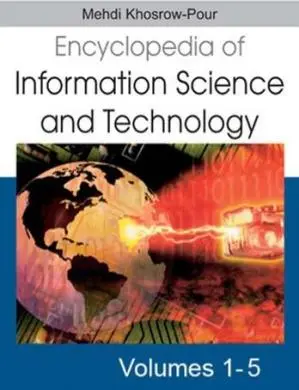《Encyclopedia of Information Science and Technology, Volumes 1-5》(txt+pdf+epub+mobi电子书下载)|百度网盘下载
The Encyclopedia of Information Science and Technology is the first work to map this ever-changing field. It is the most comprehensive, research-based encyclopedia consisting of contributions from over 900 noted researchers in over 50 countries. This five-volume encyclopedia includes more than 550 articles highlighting current concepts, issues and emerging technologies. These articles are enhanced by special attention that is paid to over 4,500 technical and managerial terms. These terms will each have a 5-50 word description that allow the users of this extensive research source to learn the language and terminology of the field. In addition, these volumes offer a thorough reference section with over 11,500 sources of information that can be accessed by scholars, students, and researchers in the field of information science and technology.

Actor-network theory considers both social and technical determinism to be flawed and proposes instead a
socio-technical account (Latour, 1996) in which nothing
is purely social and nothing is purely technical (Law,
1991). ANT deals with the social-technical divide by
denying that purely technical or purely social relations are
possible.
To see better how this works, suppose that an IS
researcher was investigating the uptake of a business-tobusiness e-commerce portal developed by a local government authority for use within a regional area, with an
Internet service provider (ISP) and a software company
engaged to build the portal, and a bank to provide a
payment gateway. ANT asserts that the world is full of
hybrid entities (Latour, 1991) containing both human and
non-human elements and offers the notion of heterogeneity to describe projects such as this. The project will
involve not just these entities, but also non-human entities such as computers, computer programs, data storage
devices, modems and telephone lines, and human entities
including local business proprietors from small and large
businesses, customers, programmers and local council
staff. The utilisation of heterogeneous entities (Bijker,
Hughes & Pinch, 1987) then avoids questions of: “is it
social?” or “is it technical?” as missing the point, which
should be: “is this association stronger or weaker than
that one?” (Latour, 1991).
Information systems researchers using an ANT approach would concentrate on issues of network formation, investigating the human and non-human alliances
and networks built up by the actors involved. They would
concentrate on the negotiations that allow the network to
be configured by the enrolment of both human and nonhuman allies. Interactions and associations between actors and networks are all important, and actors are seen
simply as the sum of their interactions with other actors
and networks.
In the case of the portal an actor-network researcher
would begin by identifying some of the important actors,
starting perhaps with the local government portal project
manager. An interview with the project manager would
reveal why the project was instigated and identify some
of the other actors. The main advice on method suggested
by the proponents of actor-network theory is to “follow
the actors” (Latour, 1996) and let them set the framework
and limits of the study themselves, and one line of inquiry
resulting from the interview with the project manager
might be to approach the portal software designer and
programmers. Another set of actors is the proprietors of
the local businesses themselves, and the project manager
may suggest some “business champions” to interview
first. At least some of these business people might then
point to the influence exerted by the computer hardware
or software as a significant factor, so identifying some
non-human actors. Negotiations between actors must be
carefully investigated. Apart from the obvious human-tohuman kind of negotiation, also included must be humanto-non-human interactions such as the business people
trying to work out how the portal operates, and how to
adapt this technology to be most suitable for their own
business purposes. The process of adopting and implementing the portal can now be seen as the complex set of
interactions that it is, and not just the inevitable result of
the innate characteristics of this technology.
链接:https://pan.baidu.com/s/10pjt2TBeOPihzp8S0obmcA
相关文章
- 《数理逻辑》汪芳庭(txt+pdf+epub+mobi电子书下载)|百度网盘下载
- 《改造⽣命 如何改变世界》PDF|百度网盘下载
- 《2019ATA就业力报告》pdf|百度网盘下载-数字化时代的人才测评体系研究
- 《中国留学白皮书2022》PDF|百度网盘下载
- 《鹿川有许多粪》 TXT + PDF + EPUB + MOBI + AZW3 百度网盘下载
- 《海天旭日》—— 上海宝山诗文选(txt+pdf+epub+mobi电子书下载)|百度网盘下载
- 《星星上的人-卡罗琳·帕克丝特》非PDF,epub版本百度网盘下载
- Whistler: or, The Manly Boy by Walter Aimwell(txt+pdf+epub+mobi电子书下载)|百度网盘下载
- [每天读本书]《如何高效学习》 Kindle电子书 pdf
- 玄隐遗密原文与注释pdf下载

